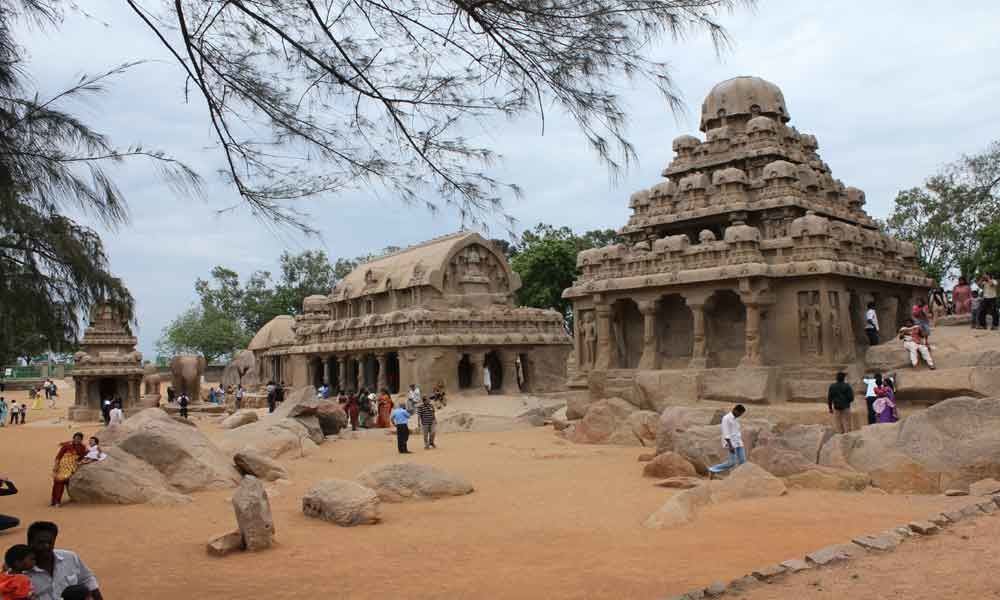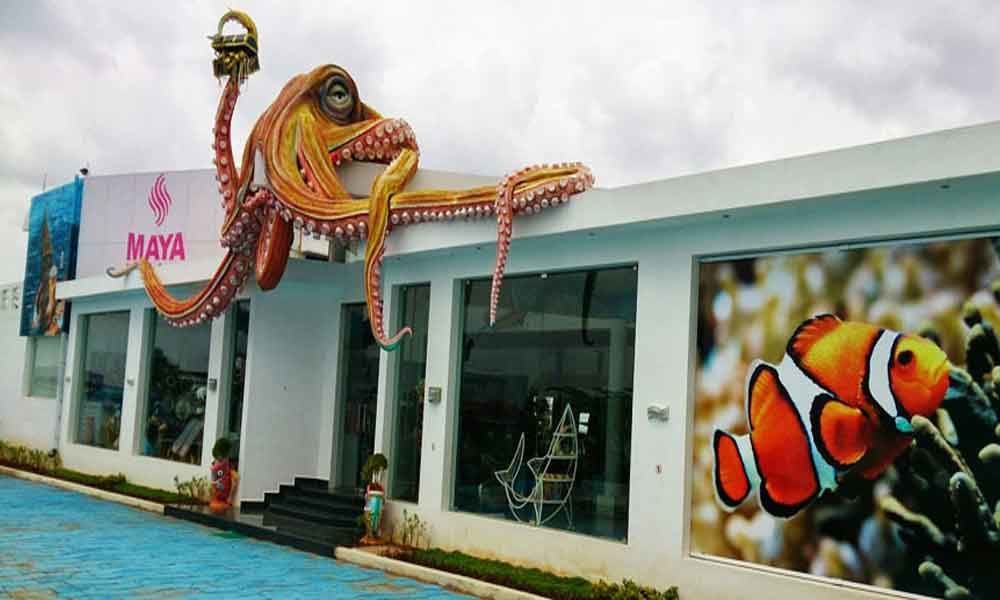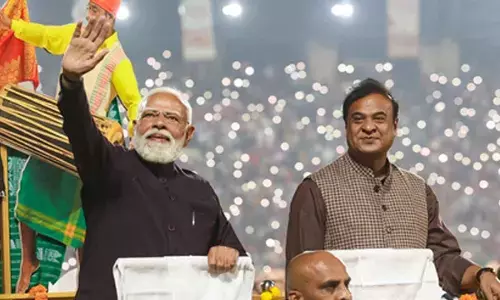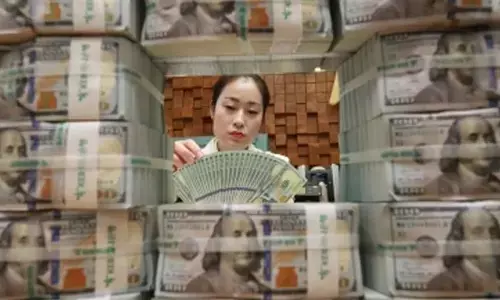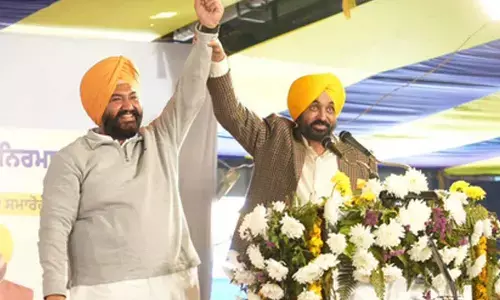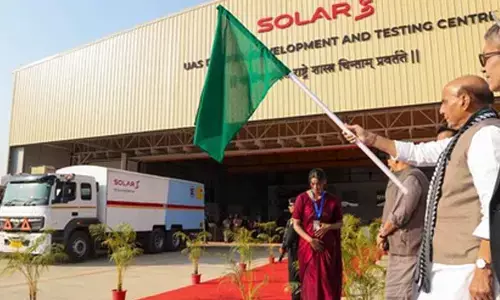Mahabalipuram diaries!
Mahabalipuram, the UNESCO World Heritage Site has a large collection of religious monuments and temples all known for their architectural brilliance…
Whenever in Chennai for the music season, I tend to take time out to visit nearby destinations. Especially, new cultural spaces within the city itself. Last time around, a friend suggested Mahabalipuram aka Mamallapuram—which is barely 60 km from the city. I had seen it several times before—during the annual Mahabalipuram Dance Festival and at other times, but I was still tempted.
After all, Mahabalipuram is a UNESCO World Heritage Site with a large collection of religious monuments and temples all known for their architectural brilliance. It also boasts one of the world's largest open-air rock reliefs in the world—Gangavatharanam meaning descent of the Ganga river or Arjuna Tapas meaning Arjuna's penance. To me, this is the most spectacular piece in the entire complex, which is dated to around 7th and 8th century AD. Some of the archaeological excavations here are dated to the 6th century and earlier times. There are other draws here. There is the National Seashell Museum, a picturesque, though very crowded, beach, plenty of street food, some shipwrecks, and seashell ornaments and decor pieces in a wide price range.
The name Mahabalipuram has several variations and is generally believed to be derived from the word Mamalla or Maha Malla meaning Great Wrestler or to Pallava king Narasimha Varma, or to Mahabali, the king made famous by the Vamana avatar of Vishnu, whom legends say is the founder of the city. Another theory holds that the name refers to Mallal or the Tamil word for wealth and prosperity. There is also the moniker 'Seven Pagodas', a popular nickname. The seven stupas or pinnacles of the temples gave it this name.
However, this is also linked to a myth. According to this, seven temples were originally been built here, of which six are submerged and only one is above water. Locals especially believe that this Shore Temple of Mahabalipuram is only one of the seven which is visible today and the other six can be found deep beneath the waters.
The Tamil Nadu government has adopted the word Mamallapuram as the official name of the site. The government also hosts an annual dance festival here during winter wherein the major Indian classical dance forms are showcased through the focus is on Bharatanatyam.
Before the journey, the first challenge was to gather together like-minded friends. Two of us at the Chennai for the music season checked out from the friends' places in which we were staying and picked up snacks for the road trip from local vendors—the Chennai equivalent of the Swagruhas of the Telugu states as well as Grand snacks and Krishna Sweets. Another one came down from Nellore with some packed food and crunchies from the small but renowned Komala Vilas. Another friend was in Tirupati at the sprawling five-star hotel, Marasa Sarovar. So, we first went over to Tirupati and had a darshan of the Lord of the Seven Hills, dined at the hotel's Lotus Restaurant with two of my friends gorging on the seafood delicacies. This hotel is among the very few which offers fine-dining in both the vegetarian and non-vegetarian restaurants.
My Golden-Temple inspired thali at Krishna restaurant was delicious and reminded me of my resolve to revisit the historic city of Amritsar and show my cousins around the Golden Temple and its famous langar. The first visit had been memorable—but that is another story.
From Chennai, it was barely a 70-minute drive to Mahabalipuram along the Coromandel Coast past lush farmland and a few rural settlements. We reached around sunrise—the views are spectacular at this point as they are at sunset. There are around 400 monuments and temples in all over here showcasing an absolutely amazing variety of architecture.
The exquisite carvings on the walls, in niches and pillars, an amazing variety of forms and textures, the symmetry of the monolithic structures—everything leaves you breathless with their accuracy and sheer aesthetic beauty. There are the ratha (meaning chariot) temples so named for their monolithic processional appearance, stone-cut temples, cave temples or mandapa viharas, rock reliefs and archaeological excavations. The monuments were built during the rule of the Pallava dynasty and are attributed to the 7th and 8th centuries AD.
The ratha temples, imposing free-standing structures were our first stop. The best known are five, enormous monolithic structures called 'Pancha Rathas' or 'Pandava Rathas' (after the famous five brothers of the Mahabharata) though one realises that this is just a casual or convenient name. This is because everything about the temples and their carvings is actually about Vishnu, Shiva, and Shakti. The massive plinth bases, the sculptures within the niches, curved roofs and Makara thoranams are some of the impressive features. In fact, the entire complex of the UNESCO heritage site has hundreds of sculptures that celebrate Shiva and his family.
The sun had come up by the time we spent an hour photographing the rathas and we saw hawkers and kite-flyers gradually filling up the beach area even as more tourists also began streaming in. This historic site is now a bustling tourist attraction and the beachside is a draw even for those not inclined to visit the temples.
We took a pause for breakfast. There are plenty of stalls along the beach area that churn out fast food like idli, dosa, vadas, etc. These stalls also serve seafood though mostly during lunch time and come evening, they sell pakodas, bajjis and samosas of all kinds. Besides, there are several restaurants within the town itself which you will encounter even as you drive in. Some of these restaurants are part of Chennai-based chains and serve pretty decent food, especially the vegetarian ones. However, don't expect fine-dining—if you want that, go to Chennai.
We next made our way to Krishna's Butter Ball—named after the dark-skinned god's love of butter patted into smooth balls during his childhood. This is actually a gigantic granite boulder resting on an incline. And it has stayed there, not rolling down the slope, and without moving at all for the past 12 centuries at least! Given the way it appears to defy gravity, it is often listed among the natural wonders of our country.
We then wandered around the stalls selling local merchandise for some time. There are plenty of seashell ornaments available as also mirrors of all sizes and shapes framed by seashells, bags accessorised with seashells besides all kinds of trinkets. After a quick lunch at a local eatery a short drive from the monuments complex, we returned and checked out the Mahishashura Mardhini Cave temple where the goddess is surrounded by ganas and yoginis and the Varaha temple—this latter is named after the varaha or boar incarnation of Vishnu. There is also the Thirukadamallai, a Vishnu temple.
Towards late afternoon, we visited the Seashell Museum. If you like conches, this is the place for you. The museum contains over 40,000 displays including rare seashells, whale, shark teeth, whale fins. In fact, the museum has an enormous and colourful conch atop the centre of its roof and a conch-like structure in the garden fronting the facade.
We returned to Chennai late at night, and the next morning headed to the famous Cholamandalam Artists Village and then headed to Tirupati. We had a meal at Marasa Sarovar's pure vegetarian Krishna restaurant, before heading uphill for yet another darshan of the presiding deity, Lord Venkateswara at Tirumala. We visited its famed flower gardens and greenhouses which boast world records. We also did a quick trip to Kanchipuram. But all these amazing places make for another story.



